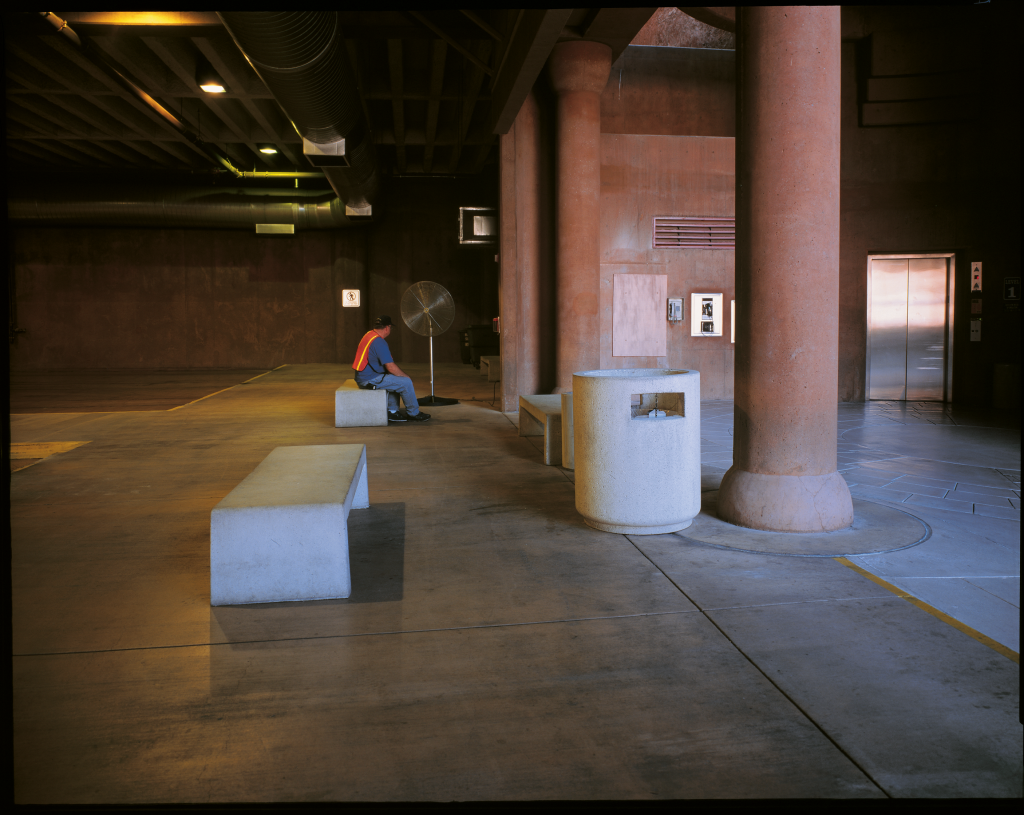Tom HunterTom Hunter

As Tom Hunter’s richly coloured and sumptuous cibachromes depict life amidst the travellers and squatters of contemporary urban society, so their aesthetic – their poise and their politics – are drawn directly from the credo of the political romanticism of the mid-nineteenth century. In his best known series, Persons Unknown and Life and Death In Hackney, Hunter recreates scenes, respectively, from Vermeer and the paintings of the pre-Raphaelites; and yet his recreations are wholly free of and utterly opposed to the dogma of post-modern irony. Rather, they are fuelled by an unashamedly Keatsian belief that truth and beauty are the rhetoric of virtue. These photographs – epic, absorbing, neo-Victorian narrative works – uphold the Ruskinian notion that ‘good’ art tells the truth about its times, and that beauty, far from being merely decorative or decadent, is morally empowered at the most profound level.
The dynamic of Hunter’s photography seems to gain its extraordinary tension – there is a haunting stillness in many of his photographs which is both compelling and pastoral – by creating a fusion of craft and ideology. His pictures are always meticulous in their poise, composition and lighting, describing a dedication to pictorial craft which is wholly sympathetic to the labour of pre-Raphaelite painting, in its determination to achieve an absolute fidelity to nature. Similarly, his subject matter – those incidents of struggle which tend, in modernist tradition, to be the domain of social realism or photo-journalism – is enabled and thus politically repositioned by its elevated aesthetic status. In simple terms – and the beauty in Hunter’s photography is simple in its eloquence – these pictures enthrone the humanity of ordinary people and troubled lives, as surely as the political journalism of Charles Dickens or the painterly cinema of Francis Ford Coppola.
For Dickens, the literary became vivid and visual, building scenes by detail and incident until he had crammed his canvas, so to speak, with the precise atmosphere of a moment of London life. In this, the photography of Tom Hunter could be seen to update the Dickensian insistence on ‘scenes’ – that the frequent chaos of human struggle was often set against a sense of constancy – be that fate, or history or destiny, which appeared almost to still itself. We might think of the London fog which pervades the opening of Dickens’ Bleak House, or the portentous night which folds around Pip as he visits the churchyard in Great Expectations. In the photography of Tom Hunter, these qualities of destiny are translated into a use of light, subject and composition, suggesting some quiet centre – a silence, almost – which is as far removed from common happiness as it is from heroism; rather, his pictures appear to describe what Sir Maurice Bowra, in his classic study The Romantic Imagination, defined as the [Romantic’s] belief “that it is the whole spiritual nature of man that counts, and to this, they made their challenge and their appeal.”
Occurring as they do at the end of the twentieth century and the beginnings of the twenty-first, the photographs of Tom Hunter are all the more remarkable for their seemingly unshakeable belief in the power of photography to operate beyond or above the consequences of post-modernism, and the postmodern assertion that signs now flail in a bombardment of quotations and shifting intentionality. Rather than allowing his work to be dominated by either its art-historical referencing or stylistic gorgeousness, Hunter seems to place faith in the edifying qualities of the beautiful – that the rhetoric of beauty will incline the world to compassion, neither sentimental nor self-righteous, but perhaps as WH Auden wrote: “jumbled in one common box, of their dark humanity, orchid, swan and Caesar lie…”
